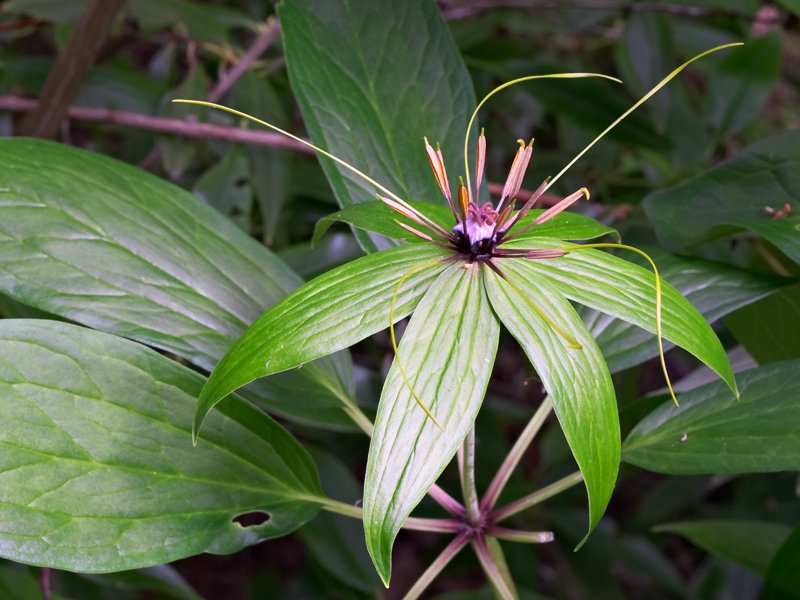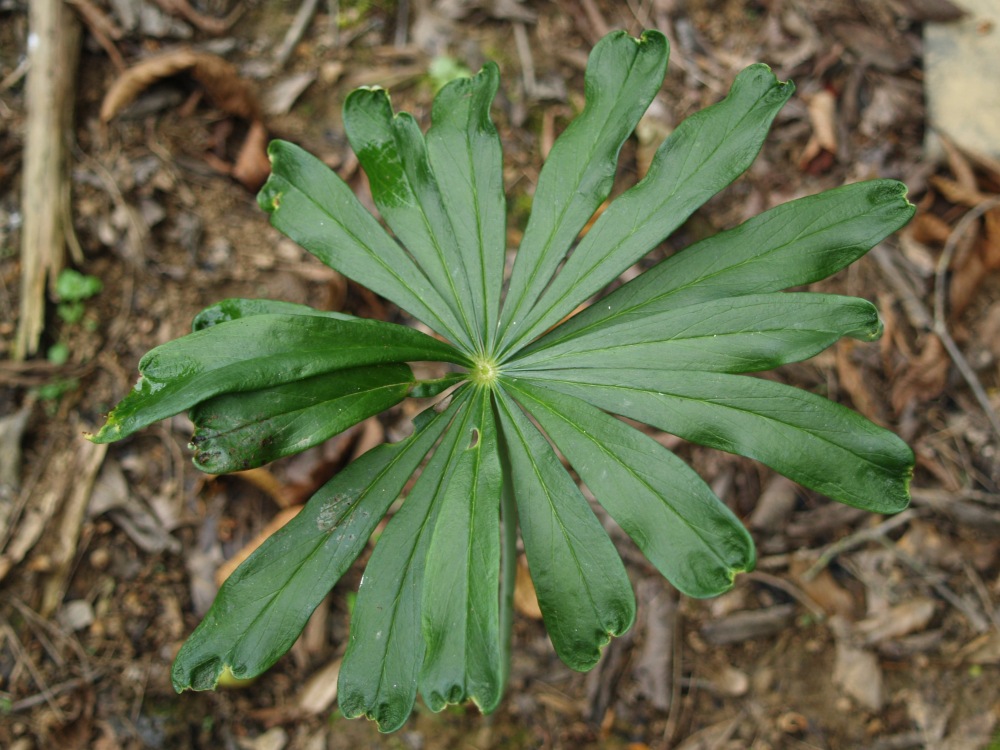On occasion a small plant will be ripped from the ground, usually (I suspect) by hungry deer. A few years ago I found a newly planted rhubarb several paces from where it had been planted with leaves and stems chewed down to the roots. The following year another newly planted rhubarb was uprooted, never to be found, so it’s clear the only way to replant it is with a protective fence or guard dog. I don’t think I’ll be planting rhubarb again.
In most years I’ll plant a few oddities that are available only through specialty mail order growers, and often there will be substantial evidence afterwards to show why the plant is not commonly available. Mostly the plants prove to be weak growers or ill suited to extremes in climate, but an occasional success makes the effort worthwhile.
I planted the Chinese woodland perennial Paris (Paris polyphylla, above) a few years ago in a well protected spot with just enough shade (I thought). I questioned if there would be adequate space for it when it grew to its full size, but I’ve been known on occasion to let these things work out on their own. In any case, during last year’s long, hot summer (aren’t they all) Paris disappeared in mid drought, which was not too surprising since it was not thriving even through the damp spring.
I gave up on it, but was only slightly surprised when Paris reappeared this spring. I suppose the roots had become established enough that it had sufficient vigor when the top of the plant went dormant in the heat, but as a backup I purchased and planted a handful of bulbs from another vendor. These were planted in a much sunnier location (though not full, full sun), but one that was questionably too damp should Paris prove to be intolerant of moist soil.
The original Paris continued to lack vigor through this spring, but it was alive, and the newly planted bulbs showed no sign of life. Then, a few weeks ago the tiny Paris was gone, neatly excavated by an unknown creature. This work was not done by deer (since the spot is not easily accessible), but possibly by mischievous chipmunks (that are often seen in the area), or rascally rabbits (that are increasingly abundant in the area). Why they chose the tiny Paris is a mystery, particularly since the five tardy bulbs have now sprouted.
To bring this adventure nearly to a close, I had no idea what the five late sprouting plants were, though it was clear they were something that I planted. Some years I plant so much stuff, and stuff that I’m not familiar with, that I have no clue what’s planted where. The tiny Paris had never grown enough to see much of it, so it didn’t register, though the plants looked somewhat similar to other plants in the garden that have since proven to be completely unrelated.
Through some unfathomable process, pertinent facts were added and subtracted (Googled) until it was revealed that the plants in question were almost undoubtedly Paris, though there remains some doubt since the foliage of two is distinctly different from the others. There are, of course different types of Paris, and I am supposing that the bulbs were mixed by the supplier (which, if true, makes for another overly long story). While the identification is not fully established, I figure that the next step for the nearly twenty inch tall umbrellas of foliage is for them to flower. Though the blooms of Paris are wispy and hardly showstoppers, the odd flowers are the reason for my purchase, so if my identification is confirmed the chipmunks will be forgiven.